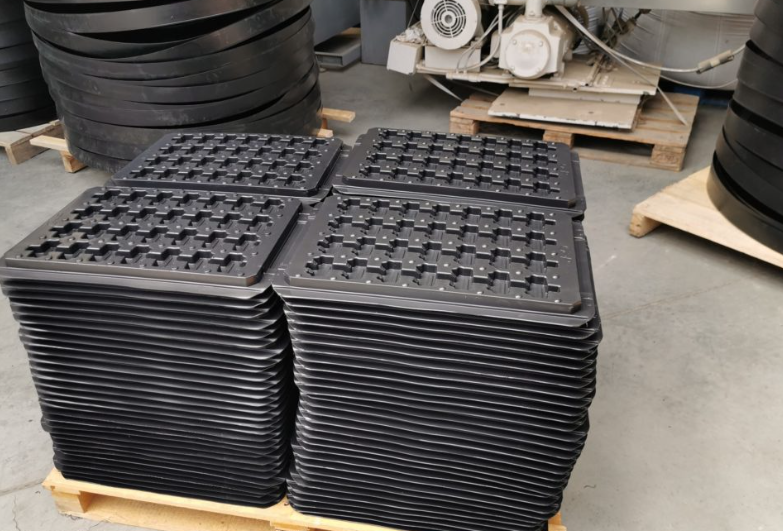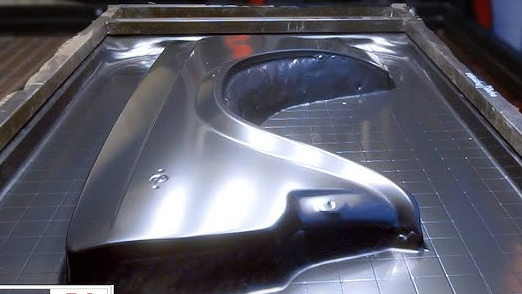The minimum radius in vacuum forming depends on material thickness, type, and mold design, typically ranging from 3 to 50 mm.
Design Parameters in Vacuum Forming
Impact of Material Selection on Minimum Radius
Choosing the right material is crucial for achieving the desired minimum radius in vacuum forming. Different materials have varying degrees of flexibility and heat resistance, which directly influence the attainable radius. For instance, Acrylonitrile Butadiene Styrene (ABS), known for its toughness and impact resistance, can form tighter radii compared to more rigid materials like Polystyrene (PS). Materials like Polyethylene (PE) and Polyvinyl Chloride (PVC) also offer unique characteristics; PE is known for its flexibility and impact resistance, while PVC provides excellent chemical resistance and rigidity.

The thickness of the material plays a significant role as well. Thicker sheets typically require larger radii to avoid stress cracking or tearing during the forming process. For example, a material with a thickness of 0.5 mm might form a radius as small as 3 mm, whereas a 5 mm thick sheet may require a minimum radius of 50 mm to form properly.
Importance of Temperature and Pressure Settings
Temperature and pressure settings are key factors in vacuum forming, directly impacting the quality and precision of the formed parts. Optimal temperature settings ensure that the material is sufficiently pliable for forming. For example, ABS generally requires a heating range of 160°C to 270°C for effective forming. Overheating can lead to material degradation and warping, while insufficient heating may result in incomplete forming and higher stress levels in the material.
Determining Factors for Minimum Radius
Relationship Between Material Thickness and Radius
Understanding the relationship between material thickness and the achievable minimum radius is vital in vacuum forming. Here are some key points:
- Thinner Materials: They often allow for smaller radii. For instance, a 0.5 mm thick sheet may form a radius as small as 2-3 mm.
- Thicker Materials: As the material thickness increases, the minimum radius also increases due to decreased flexibility. A 5 mm thick sheet typically requires a minimum radius of about 50 mm to form properly.
- Material Type: Different materials behave differently. For example, PVC tends to be more flexible than ABS at the same thickness, affecting the minimum radius they can achieve.
Optimal Temperature Ranges: Each material has a specific temperature range for effective forming. Exceeding this range can cause issues like warping or material weakening.
Influence of Mold Design on Radius
Mold design is another critical factor in determining the minimum radius. Consider the following details:
- Mold Material: Materials like aluminum allow for finer detailing, thus supporting smaller radii compared to molds made from less precise materials.
- Mold Surface Finish: A smoother finish can facilitate tighter radii as the material can stretch more evenly over the mold.
- Draft Angles: Properly designed draft angles in the mold can aid in forming smaller radii without material tearing or deformation.
- Undercuts and Sharp Corners: These design elements can limit the achievable radius. Rounded corners in the mold design help in achieving tighter radii.
Technical Challenges in Vacuum Forming Process
Common Issues in Forming Minimum Radius
In the vacuum forming process, achieving the minimum radius presents several technical challenges. Some of these include:
- Material Wrinkling: Occurs when the material is unable to stretch uniformly over the mold, often due to inadequate heating or improper material selection.
- Webbing: This happens when the material sags between mold areas, creating web-like formations, particularly in complex molds or with thicker materials.
- Stress Cracking: Particularly an issue with brittle materials, where the stress of forming a tight radius causes cracks.
- Thickness Variation: Achieving a consistent thickness while forming tight radii is challenging, as material tends to thin out over protruding areas.
Solutions and Adjustments
To address these challenges, various solutions and adjustments can be made:
Optimizing Material Heating: Ensuring the material is heated uniformly to the correct temperature range can reduce issues like wrinkling and webbing.
Material Selection: Choosing materials with appropriate flexibility and thickness for the desired radius can prevent stress cracking and thickness variation.
Mold Design Adjustments: Incorporating rounded corners and gradual transitions in mold design can help in achieving tighter radii.
Pressure and Vacuum Adjustments: Fine-tuning the vacuum and air pressure during the forming process can aid in better material distribution and reduce webbing.

Best Practices in Vacuum Forming
Ensuring Successful Formation of Minimum Radius
Achieving the successful formation of minimum radius in vacuum forming involves a combination of precise control and the right techniques. Key practices include:
- Material Pre-Heating: Ensuring the material is pre-heated to the optimal temperature for its specific type helps maintain its pliability and ease of forming.
- Gradual Temperature Increase: Avoid sudden temperature spikes. Gradual heating helps in even distribution of heat, which is crucial for forming tighter radii without material degradation.
- Use of Suitable Materials: Select materials that are known for their flexibility and ability to form tight radii, such as certain grades of PVC or PETG.
- Thickness Consideration: Use the appropriate thickness for the desired radius. Thinner materials are generally better for forming smaller radii.
- Mold Design: Design molds with smooth transitions and rounded corners to facilitate easier and more effective forming of tight radii.
Tips for Improving Forming Efficiency and Quality
To enhance the efficiency and quality of the vacuum forming process, consider the following tips:
Regular Maintenance of Equipment: Ensure that vacuum forming machines and molds are regularly maintained. This includes checking for uniform heating elements and ensuring vacuum pumps are in optimal condition.
Process Monitoring: Implement continuous monitoring during the forming process. This includes checking for uniform material heating, proper material placement, and adequate vacuum pressure.
Trial Runs: Before running full-scale production, conduct trial runs to ensure the process settings are optimized for the specific material and mold being used.
Quality Control: Implement stringent quality control measures. Regularly check the formed parts for uniform thickness, surface defects, and accuracy in dimensions.
Employee Training: Ensure that operators are well-trained in both the machinery and the specifics of the vacuum forming process. Knowledgeable operators can significantly reduce errors and improve overall efficiency.




